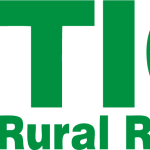We are in the process of hosting meetings for Nebraska On-Farm Research Network 2020 Annual Results Updates in Beatrice, Mead, Norfolk, Kearney, Alliance, and Grand Island. The first meeting starts on February 18 and the last one ends on February 28. To learn more about the meetings visit croptechcafe.org or contact me at 402-821-2151. One attendee last year told me during one of the meetings that “many of the products and practices evaluated by producers did not increase yield or profitability.” I replied by saying, “it is just as important to know what doesn’t work as what is working.”
One of the most frequently evaluated soybean production practice over the past decade by producers in their field, with their own equipment, has been soybean seeding rates. The results from 10 studies conducted from 2014 through 2017 that used similar seeding rates of 90, 120, 150, and 180K/acre. These studies were conducted in Merrick, Lancaster, Seward, Saunders, and Washington counties with yields levels ranging from 60 to 96 bushels/acre. Averaged across the 10 studies, a yield increase of 2 bushel per acre was measured by increasing the seeding rates from 90K to 120K, with no further yield increases above 120,000 seeds per acre. Looking at each individual study, 4 studies recorded the most profitable seeding rate was actually 90K. In 2018, two 2018 soybean seeding rate studies also showed no advantage to increasing seeding rates above 100,000 seeds per acre. In 2019, six soybean reading rate studies (80, 110, 140, 170K seeds/acre) were conducted and there was no significant yield increase with seeding rates higher that 110K seeds/acre. You can find and view past (2018 and earlier) soybean seeding rate studies conducted by Nebraska farmers online at resultsfinder.unl.edu.
Nebraska Extension’s current recommendation based on Nebraska on-farm research studies is to plant 120,000 soybeans seeds per acre. Current recommendations from Iowa State University are 125,000 to 140,000 seeds/acre. Current recommendations from Kansas State University are dependent on the yield environment and target final stands or plants per acres. Kansas State University results show 127,000 plants per acre in low yield environments and around 100,000 plants per acre in medium and high yield environment maximizes yield. Regional research data has concluded that 100,000 plants per acre at harvest is a great target. In some situations, you should consider higher seeding rates when you have a lower than normal germination percentage on the seed lot, fields with history of stand establishment issues such as seedling diseases and crusting, or fields with a history of iron deficiency chlorosis.
Inherently we try to minimize the risk of a poor stand through using fungicide seed treatments, planting extra seed, and buying hail insurance. I believe that fungicide-treated seed planted at 180,000 seed/acre and purchasing hail insurance is too costly of a risk management plan. So purchase the hail insurance, use fungicide-treated seed, but reduce you seeding rate down to at least 140,000 seeds/acre, that is 1 unit or bag per acre. Know your crop, know your tech, know your bottom line.


